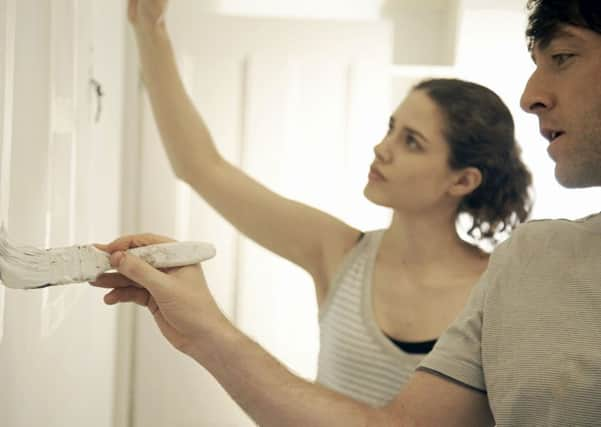Tips for preparation and painting


With bare wood or plaster, it’s often easier to see what needs to be filled after applying a coat of paint, so it’s not always possible to do all the prep in one go.
Quick-drying fine fillers, such as the Polycell Advanced Polyfilla (£8.99 for 600ml, Homebase), are invaluable for filling walls and ceilings halfway through the job because as long as the repair isn’t deep, they dry in no time and require little to no sanding. Wood fillers dry quickly anyway, but usually have to be sanded.
Advertisement
Hide AdAdvertisement
Hide AdAnother important aspect of prep is priming. Applying a primer or primer/undercoat ensures your topcoat has more chance of adhering to the surface and lasting long term. Shiny surfaces, for example, usually have to be sanded, cleaned off and then primed with a suitable primer to make the surface matt so the topcoat will adhere. Dulux Primer for Difficult Surfaces (£18.19 for 750ml, www.dulux.co.uk) is a versatile option because it is quick drying and can be used to prime MDF, tiles, melamine and UPVC. These aren’t the easiest surfaces to paint and keep looking good, but if you use the right products and do the right prep, you shouldn’t have a problem.
Sometimes you need to make a surface less porous or absorbent first. New plaster is really absorbent and sucks up water, so a popular way to seal it is with watered-down emulsion - it must be sealed before painting, wallpapering or tiling etc. Priming can also seal surfaces - before you paint knotty wood for the first time, it’s vital to seal the whorls because the resin in them can bleed through the paint and spoil the finish. Use knotting solution to do this or try Ronseal Knot Block Wood Primer & Undercoat (from £7.98 for 250ml, B&Q), which seals in the resin and primes and undercoats the wood in one easy-to-use, quick-drying white paint.
Although time-consuming, sometimes the best way to get a good finish is to lightly sand and clean off between coats of paint, especially with wood and MDF - MDF can be ‘furry’ so light sanding is often a good idea. A handy way to seal and prepare MDF is with Crown MDF Primer (£14.99 for 750ml, Homebase), which provides better adhesion for the topcoat and dries really fast - do a couple of coats to cover well.
As well as specialist primers, specialist topcoats can solve decorating problems too. If you have a dark room, you may think you can’t do much about it, but you can. For the walls and ceiling, brighten things up with a product like Dulux Light + Space Matt emulsion (from £20.99 for 2.5ltr, www.dulux.co.uk). It is specially formulated to bounce light around the room with light-reflective particles that reflect up to twice as much light as Dulux’s standard emulsions. White is the obvious choice for brightening up a space and making it feel lighter and bigger, but good white emulsions are hard to find, as many produce a patchy finish or don’t cover well. The Dulux Light + Space range also includes pastel colours, including Nordic Spa, a pretty pale green that’s ideal for summer, that dries very quickly and goes a long way.